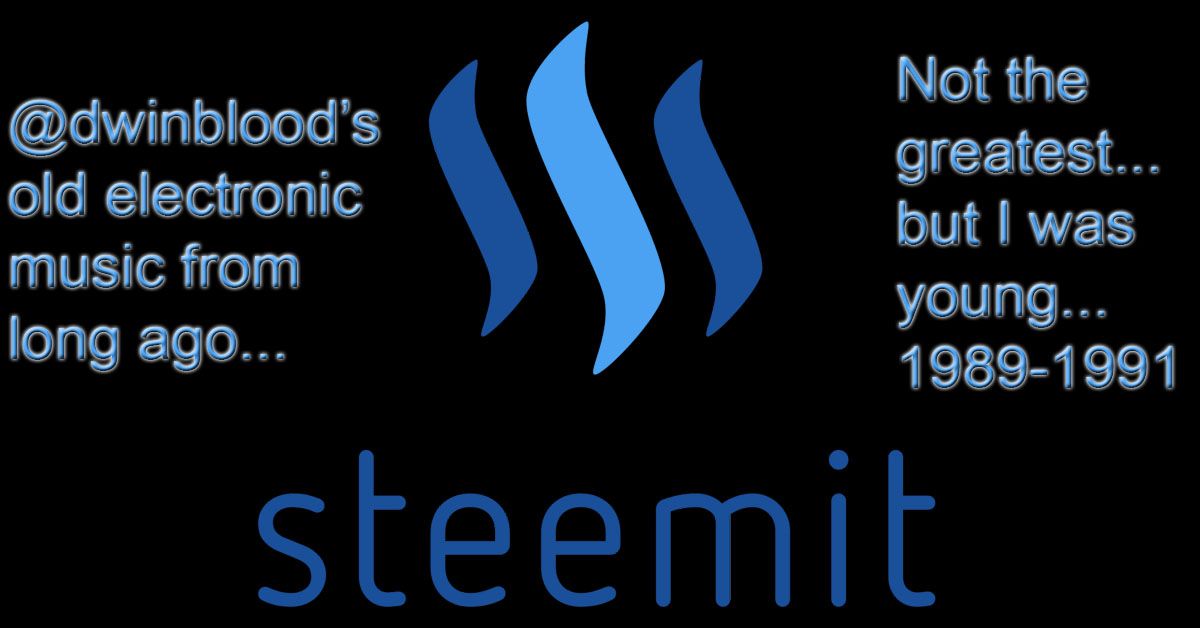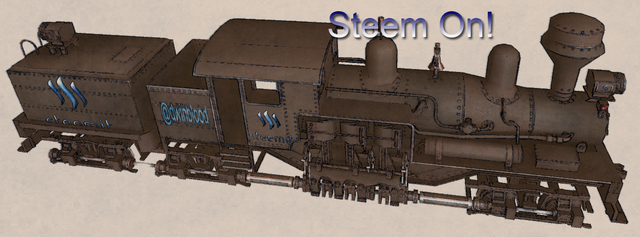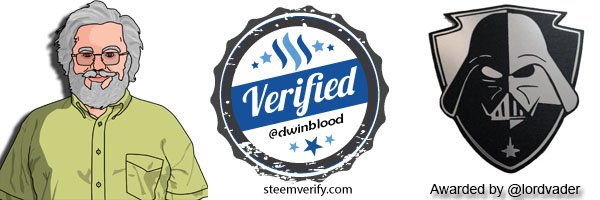Composing music on computers. From the 80s wave based to trackers, some of my journey...

It has been a long while since I composed a lot of electronic music on my computer. I have a lot of tools to just that, but I also find as I get older I have more and more things I want to do and seemingly less and less time.
There were points in my earlier life where I had a lot more time I devoted to side explorations and moments of discovery.
In this post I want talk about my forays into the world of digital music composition. It was nowhere as fancy or as easy to do back then as it has become today. There were a lot of limitations that no longer exist. Yet, it was fun.
My first electronic music compositions were on a Commodore 64 with a program that let me lay out music in sheet music format. It had a treble clef and a bass clef and you placed anything from whole notes to 64th notes on the sheet. If I remember correctly it supported up to three notes at once so you could form a full three tone chord/triad if you wanted.
The sounds were very primitive. You could choose from Sine, Sawtooth, Pulse, or Triangle wave forms for your instruments. That was about it.
It also didn't sound great, but it was a lot of fun. It also had me actively writing a bunch of sheet music on my computer. It was pretty crappy sounding and not anything to really show off to other people and have them say "Wow, that is great!"

I no longer have any of my music from this time frame. Yet the following youtube video demonstrates the program and the quality of the sounds you could get from this.
Enter Commodore Amiga
Things changed quite a bit when the Commodore Amiga 2000 became my new computer. This machine could support 4 channels of 8 bit sound. This means you could use digitized instruments you made by recording sounds from other sources such as a microphone as an instrument. 8 bit sound has some fidelity issues but it is a lot better. You could play 4 sounds simultaneously.
I looked for sheet music based programs for the Amiga and they all kind of sucked. So I was forced to learn how to use something that was rather new back then called a tracker.
Instead of sheet music you build songs based around patterns. A block of music could be considered like a measure in music or several measures. You could dictate how fast beats moved through that block.
You then would place in the block on each of the four tracks when you wanted a sound to occur. You would tell it the NOTE to play, the octave of that note, and which instrument sound to use. So you could have many more than 4 sounds, but you could only play 4 of them at a time. There was a lot of juggling. It really worked better than sheet music once you got into the extra fields for special effects, volume, and other things. You had even more control just a very different way of looking at it.
Once I learned to use it I loved it. I had well over 100 songs written on my Commodore Amiga at one point. I would end up losing most of them, and some of my favorites I never expect to hear again. I had however, discovered the internet before WWW and there were scenes of people trading MEDs and MODs which were tracker music back then. I shared some of mine, and some of the instruments I made an a small number of those I've been able to find on the internet. I will share the things I can find of mine towards the end of this post.
I find it interesting that Moby also got his start in this tracking scene. He was of course way better than I was at this. I wrote 100s of songs and many of them were pure crap, some were great, and others were mostly crap with a few good parts.
Here is an example of the tracker I used and someone elses music playing... This is actually the program I used. This is the version called OctaMED where the author managed to get the Amiga to do 8 sounds at a time by some wizardry, but this track here is only using 4 sounds at a time.
As those letters slide by you'll see something like C-3 which is note C in octave 3. If it adds a # then it is a C#. You didn't really use flats in this, you would fake flats by using their sharp equivalent. Then the first number after that is used to indicate which instrument to play there. The numbers after that are used for volume and special effects.
MIDI
You could use MIDI to interface with those so you could input and compose using a keyboard. I didn't own a keyboard at the time. I did mess with MIDI some in a MIDI lab on campus back then and it was using an early version Cake Walk which was very different from these trackers.
Hiatus
Once I switched to a Windows machine after leaving my Amiga behind after Commodore dropped the ball with it I really didn't have a Windows based music program I liked. I have tons of them from Ableton, ACID, Cake Walk, and many more, but they just don't cut it for me. They are not my style. So I stopped writing music.
I also became a parent during this time period, so dedicating a lot more time to my family became a reality.
A few years ago I found an alternative. It is actually far better than any of those I used on the Amiga but uses the same tracker approach. My problem has been purely one of too many projects not enough time, or I'd likely have gone nuts with this one.
Renoise
I did find a really phenomenal tracker program called Renoise for the PC. It is actually my favorite music program at this time and if I DO manage to get around to it I plan to dive deep into it, because it can do far more than the old trackers I used and it can actually compete with pretty much any music program out there. The simple difference is it is based around a tracker.
Here are some awesome renoise demo songs... they are not written by me.
Some of my music
Now bear with me I'll show you some of my really old music from the Amiga days, and I have some simple repeatable loops I made in renoise just as background music for my space game project Wormhole Ventures.
Intro to Hades - Amiga 2000 - somewhere between 1989 and 1991.
April's Favorite - Amiga 2000 - somewhere between 1989 and 1991. Intro voice by Gareld Davis and part of the song.
Long Walker - Amiga 2000 - somewhere between 1989 and 1991 and right before the country comedy song above.
Devil's Playground - Amiga 2000 - somewhere between 1989 and 1991. Using samples I made. I believe the organ at the front is from a Morbid Angel song though. The guitars though were samples I made. VLC butchered the play back a bit and didn't use the proper sample for the lead guitar so the resulting high pitched crap is a little annoying, but you get the idea.
Circle Logic - Amiga 2000 - somewhere between 1989 and 1991. VLC didn't quite do the instruments right here, but it sounds like a nice little cute old style video game song. This is the full length version.
Circle Logic - Partial - Amiga 2000 - reworked samples through Renoise a few years ago. This is only part of the song and I used this in part of a Kickstarter campaign for Wormhole Ventures.
Staring Into Your Mind - Renoise fairly recent - this is a simple loop I wrote in Renoise from something I noodle around on my guitar with sometimes. I used this loop as one of the backing tracks for my game Wormhole Ventures.



Bad Ass Post! Im a renoise lover, mostly making jungle, mostly amen chopping. follow and up!!!
DMCS was pretty decent as standard notation software, but in fact it focused more on typesetting than playing; though I've used to compose. Then, I've used Bars&Pipes Professional, so I could export to MIDI and friends (without Amiga… Amigans were rare) could listen to my compositions.
OctaMED was great!
Old style trackers do exist for modern computers too (Windows and Linux, and Mac too, I suppose). I haven't ever used Renoise, but I know friends who love it. I sometimes play with Puredata and Csound, powerful tools even if not too much userfriendly.
Renoise rocks. It is like a natural evolution of OcraMED but can do way beyond 8 instruments supports VSTs and so many other things.
Aw yiss. I remember being a proto hipster listening to .mod tracks on my Gp32 in the mid 2000s.
Oh I missed the tracker days growing up, I had to manually program my commodore 64 (did not have an app) to make sounds/music (if you would call it that). I started dabbling in making music in the mid 90's starting with samples and Acid 1.0 as well as Rebirth <3 and then the progression to that; Reason. I never heard of Renoise will have to try it out. Maybe the old tracker format would be better than drawing notes on a piano roll. Sony really jacked up Acid since they bought sonic foundry (they made great apps back in the day). So for a DAW I have been using Reaper which I like for its never ending full feature "demo" mode.
I programmed sound on my C64 as well until close to the very end then I got that music notation program. You could write music with it, print out sheet music, etc. Yet it sucked at making something you could actually use in another program.
Renoise is definitely tracker based but it has so much crap built onto it VST support and I believe DAW as well. I've barely scratched the surface on it because it goes so far beyond what the early trackers did.
There are some good video tutorials. You might take a peak at some of them to see if it looks like anything appealing to you. It is a lot less expensive than most music software.
I will def check it out. Speaking of expensive $499 for Reason don't get me wrong what it does is worth it racks worth of instruments and the latest makes great strides in being a flat out daw. But out of my price range $80 (Renoise) isn't bad tho.
I've used Reason before. Though it was not really my thing. I'd have to spend a lot of time with it to learn it's methodology.
Trying to "clean house" a bit recently, I dug up my old Music Quest MQX-32 midi card. Think it cost over $350 when I first bought it - anyone interested? I pull hard bargain! lol
Link: Music Quest MQX-32 ISA MIDI PC card...MPU-401 Compatible?
Heheh. :) I may have one of those too.